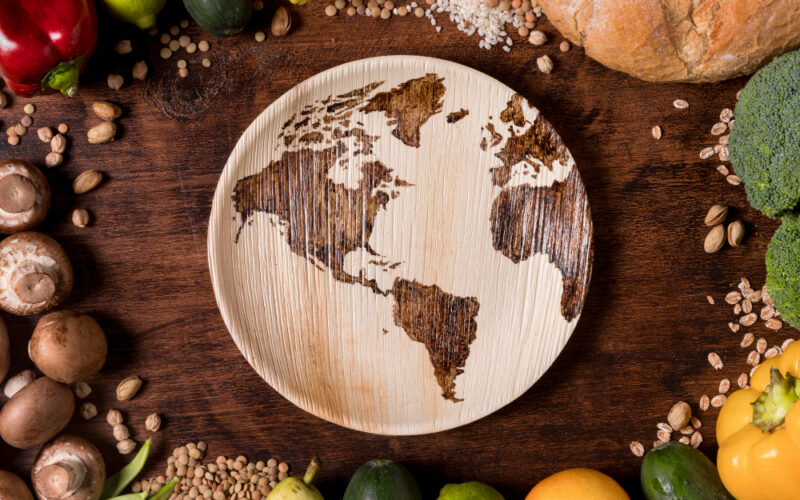The current state of world hunger is reaching unprecedented levels, with a staggering 811 million people worldwide suffering from chronic hunger as of 2022, while approximately 50 million individuals across 45 countries are experiencing emergency levels of hunger. Numerous nations now face the threat of famine as a result of this terrible situation’s escalation. It’s crucial to understand that global hunger encompasses more than just a lack of food; it also refers to the suffering and hardship that result from not having enough to eat. It includes being unable to work and obtain extra food for one’s family, as well as being forced to leave one’s house because of a lack of food resources. It’s a vicious cycle that can’t be broken by merely giving people food (Owen, 2022).
The top 3 causes of world hunger
1. Poverty
Poverty and hunger are interrelated problems that are often experienced by the same families. Those who are caught in the cycle of poverty frequently lack the means to purchase nutritious food, which results in undernourishment. Therefore, undernourishment makes it difficult for people to earn more money so they can buy healthier food selections. Additionally, in order to augment their income, poor families may turn to selling their cattle or tools, which only offers short-term comfort while sustaining a long-term cycle of hunger and poverty that can be passed down from one generation to the next. With a population of 89.56 million, the Democratic Republic of the Congo is one of the world’s poorest countries, and the majority of its citizens live on less than $1.25 per day. More than 37 million Congolese people won’t be getting their daily dietary needs met by 2021.
2. War and conflict
Conflict and famine are toxic cycles that worsen the misery of weaker communities. Crop failure in South Sudan is a result of widespread farmland abandonment and large-scale relocation brought on by the ongoing civil war. This has caused 7.2 million people to experience a food crisis, along with a surging inflation rate that has made imported food prohibitively expensive. Similar to Yemen, where the continuous conflict has caused more than half of the population—roughly 17 million people—to require emergency assistance due to the lack of ongoing humanitarian aid for food.
3. Climate
Despite having a relatively peaceful and politically stable environment, countries such as Zambia are confronted with the problem of hunger, which is largely attributable to the effects of climate change. Insufficient or excessive rainfall can devastate crops and limit the availability of animal grazing areas, and these fluctuations are compounded by the El Niño weather phenomenon, which is anticipated to become more frequent due to climate shifts. Furthermore, extreme climate patterns tend to have a disproportionate impact on impoverished areas of the world. According to estimates by the World Bank, climate change could force more than 100 million individuals into poverty within the next decade (Giovetti, 2022).
How can we stop world hunger?
1. Invest in a smallholder farmer
Rural communities around the world rely heavily on smallholder farmers who play a critical role in supplying abundant food, generating employment opportunities, and stimulating local economies. However, the combined impact of various global crises has resulted in a surge in the prices of crucial agricultural inputs such as seeds, fertilizers, and technologies, as well as water scarcity. These challenges have made it exceedingly challenging for many farmers to sustain their livelihoods, pushing some to the brink of bankruptcy and prompting others to sell their land and assets to make ends meet.
2. Eliminate food waste
It is estimated that roughly 40% of all food produced globally goes to waste, indicating that we generate a surplus of food that is more than sufficient to eradicate hunger worldwide. However, market inefficiencies and pricing structures create barriers that prevent large quantities of this food from reaching the communities that are most in need of it (McCarthy, 2022).
The World Food Programme (WFP) works to improve the lives of individuals and communities by promoting human development, collaborating with governments to enhance social protection initiatives, providing support to vulnerable communities, and helping them to weather sudden shocks without losing their assets. Through its Sahel Resilience Scale-up program, WFP has successfully transformed 158,000 hectares of barren land in five African countries into farmland and grazing pastures, benefiting over 2.5 million people through an integrated approach. The program has helped people to better withstand seasonal challenges, and has improved their access to crucial natural resources like land. This support has also enhanced the protection of families, their homes, belongings, and crops against climate hazards. By bringing people together, creating social safety nets, maintaining productive lands, and offering job opportunities, this assistance helps to break the cycle of hunger and serves as a buffer against instability (World Food Programme, 2022).
References
Giovetti, O. (2022). The top 10 causes of world hunger. [online] Concern Worldwide. Available at: https://www.concern.net/news/causes-of-world-hunger [Accessed 5 April 2023]
McCarthy, J. (2022). 7 Ways We Can Help End Hunger Once and for All This World Food Day. [online] Global Citizen. Available at: https://www.globalcitizen.org/en/content/world-food-day-end-hunger-crisis/ [Accessed 5 April 2023]
Owen, J. (2022). World hunger: Facts & how to help. [online] Worldvision.ca. Available at: https://www.worldvision.ca/stories/food/world-hunger-facts-how-to-help [Accessed 5 April 2023]
World Food Programme (2022). A global food crisis | World Food Programme. [online] World Food Programme. Available at: https://www.wfp.org/global-hunger-crisis [Accessed 5 April 2023]
